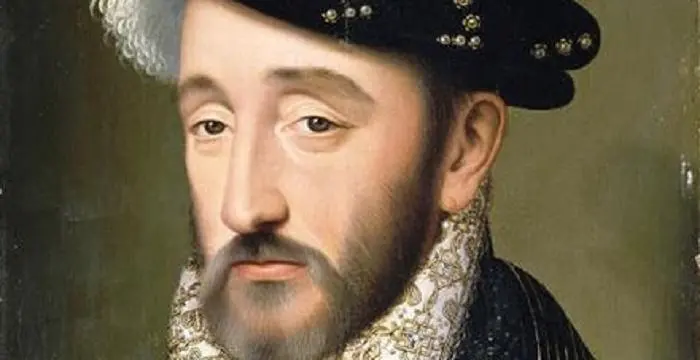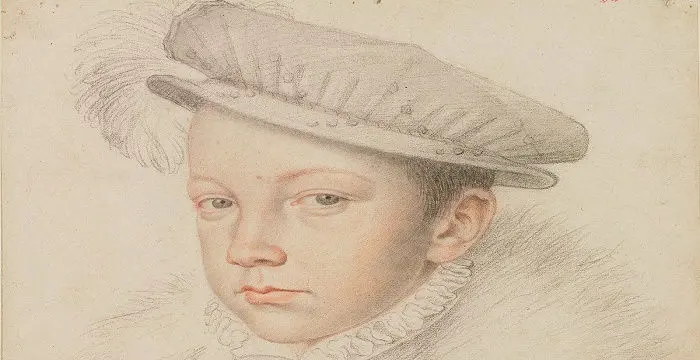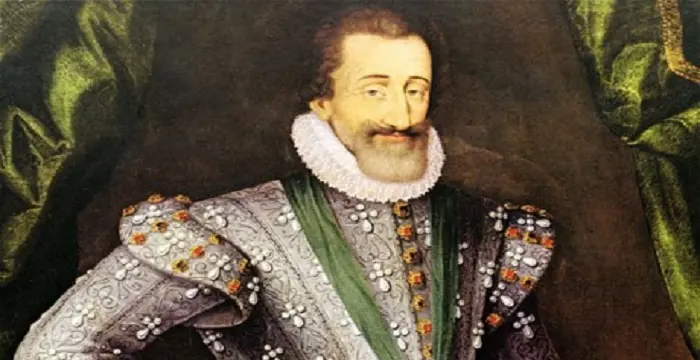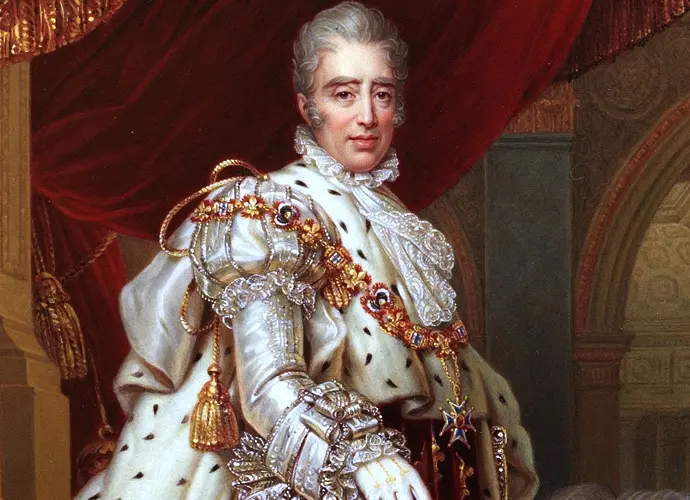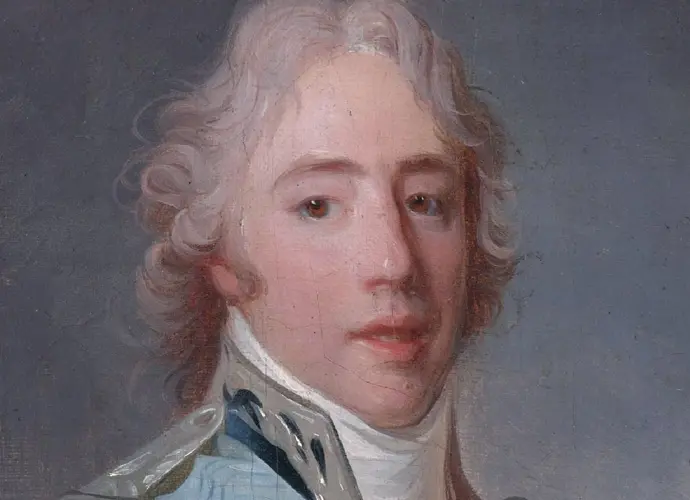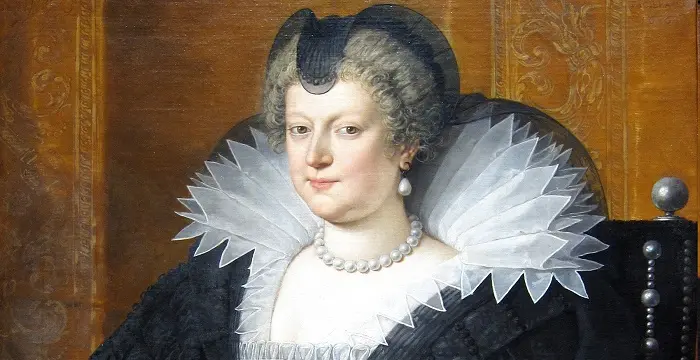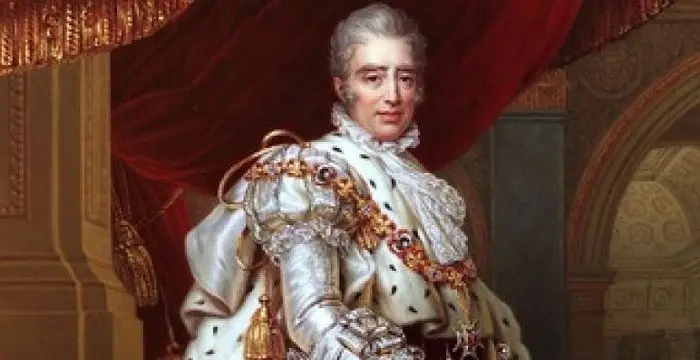
Charles X of France - King of France, Timeline and Family
Charles X of France's Personal Details
Charles X (born Charles Philippe) was King of France from 1824 to 1830
| Information | Detail |
|---|---|
| Birthday | October 9, 1757 |
| Died on | November 6, 1836 |
| Nationality | French |
| Famous | Historical Personalities, Emperors & Kings, Emperors, King of France, Kings, Navarre |
| Spouses | Princess Maria Theresa of Savoy |
| Siblings | Louis XVI of France, Louis XVIII of France |
| Known as | Charles Philippe de France |
| Childrens | Charles Ferdinand, Duke of Angoulême, Duke of Berry, Louis Antoine |
| Birth Place | Palace of Versailles, France |
| Religion | Catholicism |
| Gender | Male |
| Father | Louis, Dauphin of France |
| Mother | Maria Josepha of Saxony, Dauphine of France |
| Sun Sign | Libra |
| Born in | Palace of Versailles, France |
| Famous as | King of France and Navarre |
| Died at Age | 79 |
// Famous King of France
Henry II of France
Henry II of France was a monarch who ruled France from 1547 to 1559. Check out this biography to know about his birthday, childhood, family life, achievements and fun facts about him.
Francis II of France
Francis II of France was the eldest son of King Henry II and Catherine de’ Medici. Check out this biography for more information about his childhood, family, personal life, etc.
Henry IV of France
Henry IV was King of Navarre and King of France from 1589 to 1610. This biography of Henry IV profiles his childhood, life, reign, achievements and timeline.
Charles X of France's photo
Who is Charles X of France?
Charles X of France was born as Charles Philippe to Dauphin Louis de France and Dauphine Marie Josephduring the reign of his grandfather King Louis XV. At birth he was made Count of Artois by the king and spent the greater part of his life as such. As Charles had three elder brothers, he had little chance of becoming the king. However, with the death of his eldest brother in 1761 and father in 1765, he quickly moved two places up in the line of succession and ultimately became the king on the death of his brother King Louis XVIII of France in 1824. From the very beginning, he was an ultra royalist and could never accept the supremacy of the ‘Third Estate’ comprising of common people. Even King Louis XVI, who was guillotined during the French revolution, had described Charles as ‘more royalist than the king’. Later, as he became the king he took every available measure to bring back the glory of the royal house, ignoring the fact that the time had changed and to survive they too must change. It was because of this he had to abdicate his throne in 1830 and die in exile.
// Famous Kings
Sundiata Keita
Sundiata Keita was the founder of the Mali Empire in West Africa. This biography profiles his childhood, early life, struggles, founding of empire, rule, administration, achievements and also gives some fun facts.
Ashoka
Ashoka was the third emperor of the Mauryan Dynasty and ruled almost the entire Indian subcontinent. This biography profiles his childhood, life, reign, achievements and timeline
Murad IV
Murad IV was one of the mighty Sultans in the history of the Ottoman Empire. This biography profiles his childhood, family, accession, rule, administration and timeline.
Childhood & Early Life
Charles Philippe was born on October 9, 1757 at the Palace of Versailles in France. His father, Louis de France was the only surviving son of the reigning King Louis XVand hence his heir apparent. However, Louis died early (1765) and never became the king.
Charles’ mother, Dauphine Marie Joseph, was the Duchess of Saxony and younger daughter of the King of Poland. She died in 1767 from tuberculosis. The couple had thirteen children out of which many died young. Charles Philippe was born tenth and had three surviving brothers above him.
As a young man, Charles was said to be one of the most attractive men of the dynasty and in spite of his early marriage to Princess Maria Theresa of Savoy he is said to have numerous romantic liaisons. To distract him from such scandalous affairs, he was engaged in the siege of Gibraltar in 1782. Later, he abandoned such a lifestyle to concentrate on politics.
Charles' Political Awakening
In 1786, the monarchy in France had to face the first ever challenge. By that time, Charles’ grandfather Louis XV had passed away and Louis-Auguste had succeeded him as King Louis XVI of France. During this period, France was nearly bankrupt from wars. It soon became clear that to survive, France must undertake financial reforms.
Charles Philippe agreed that it was time to remove the financial privileges of the aristocracy but he was vehemently opposed to removal of their social privileges. Ultimately, the king set up ‘The Estate General’. It met on May 1789 after almost 160 years.
However, the great assembly failed to find any solution because the Third Estate, consisting of common people, wanted the vote to be taken all together while the clergy (First Estate) and the nobles (Second Estate) favored vote by estates. Charles opposed the demand of the Third Estate as that would have given them more votes.
On 11th July of 1789, Charles Philippe had Jacques Necker, the pro reform Finance Minister of France, dismissed from his post. He was seen sympathetic to the cause of the commoners. The incident led to a popular uprising and on 14th July the fort at Bastille was stormed. On 17th July, Charles Philippe, along with his family, fled France.
Life in Exile
Charles Philippe first went to Savoy. Then he went to Turin and then to Trier. Meanwhile, situation in Paris was turning from bad to worse. Charles tried to organize a counter revolutionary invasion of France. He also set up a court in exile at the Electorate of Trier.
On 1st January 1792, the National Assembly, formed by the Third Estate in France, declared Charles and other emigrants traitor and confiscated their property. By September, monarchy was abolished and the royal family was imprisoned. In the same year Charles escaped to Britain and received a generous allowance from King George III.
In 1793, King Louis XVI along with his queen Marie Antoinette was guillotined. Crown prince Louis XVII died two years later in prison. By then, Comte de Provence, younger brother of King Louis XVI, had also left France. After the death of his nephew, he became the titular monarch of France and began to be known as King Louis XVIII. He had his court in exile in Harland, England.
In January 1814, Charles Philippe left England to join the coalition force in the south of France as the Lieutenant General of the Kingdom. By then, Napoleon I had lost his hold. The coalition forces captured Paris on 31st March.
On April 6, 1814, Senate invited the Bourbons to reassume the throne of France. Napoleon abdicated five days later on April 11 and Charles Philippe entered Paris on 12th. He began to act as the Lieutenant General of the Kingdom until King Louis XVIII arrived on May 3.
As Lieutenant General of the Kingdom
Before the King could arrive in France, Charles created an ultra royalist secret police. Even after the King was reinstated, the force continued to operate and provided information directly to Charles bypassing the King.
King Louis XVIII died on September 16, 1824. In the absence of a male heir, Charles succeeded him as Charles X of France.
The Reign
While King Louis XVII had realized that the time had changed and was willing to accept more modern notion of governance, King Charles X refused to see the change.
King Charles X began his rein by abolition of censorship. He also offered broad amnesty to political prisoners and promised to rule according to the Charter. However, he was also very impatient and suffered from lack of judgment. Consequently, he introduced a number of laws, which made him very unpopular.
For instance, in January 1825, the king passed the Anti Sacrilege Act, which made blasphemy a crime. In April of the same year, he offered government bonds to the émigré, whose lands were confiscated during the revolution. It cost the exchequer 988 million francs, an amount France could hardly afford.
The King was anointed in May 29, 1825 at the cathedral of Reims. Although it was the traditional place for coronation of French kings, his brother King Lois XVIII had bypassed the ceremony just to avoid controversy. However, Charles decided to renew the old practice.
The King’s unpopularity began to increase day by day. It became apparent on 29th April 1827. Chaos ensued as the King was reviewing the National Guard and anti government cries were heard from the ranks. In November of the same year, his government lost majority.
From January 1828 onwards Charles dismissed two more Prime Ministers - Villèl and Jean-Baptise de Martignac in quick succession. He finally appointed Jules de Polignac on August 5, 1829. Polignac lost his majority at the end of August but refused to recall the Chamber.
The Chamber was finally convened March 2, 1830. The King’s opening speech evoked negative response, which further proved his declining popularity. Charles X dismissed the chamber on 19th March and fresh election was held on June 23. However, it too failed to provide a favorable government.
On 6 July, 1830, the king and his ministers decided to suspend the Charter and on 25 July, King Charles X issued four ordinances by which the press went under censorship, the newly elected chamber was dissolved and the electoral system was altered. It also called for elections in September.
These ordinances gave rise to unrest and popular uprising. King Charles X left Paris and took refuge at Rambouillet. On 2nd August 1930, he was forced to abdicate in favor of his grandson Henry, Duke of Bordeaux. However, his will was ignored and Lieutenant General Louis Philippe, Duke of Orléans, was selected as the new king.
Personal Life & Legacy
King Charles X of France married Princess Maria Teresa of Savoy on 16 November 1773. She was the daughter of Victor Amadeus III, King of Sardinia and Maria Antonietta of Spain. The couple had two sons Louis Antoine, Duke of Angoulême and Charles Ferdinand, Duke of Berry; two daughters Sophie and Marie Thérèse.
After abdication, Charles first left for Great Britain. He reached England on August 16, 1830 as a private citizen. Unlike last time, he was not at all welcomed there. Instead he was mocked by the crowd who waved the new tricolor flag as he embarked from the steam boat.
Charles later shifted to Scotland and stayed there until he was invited by Emperor Francis I of Austria in the end of 1832. He then moved to Prague and remained there until1835 and then moved to Gorizia. He died there on November 6, 1836 from an attack of Cholera.
// Famous Navarre
Marie de' Medici
Marie de' Medici was the Queen of France. This biography profiles her childhood, life, reign and timeline.
Charles X of France biography timelines
- // 9th Oct 1757 To 1765Charles Philippe was born on October 9, 1757 at the Palace of Versailles in France. His father, Louis de France was the only surviving son of the reigning King Louis XVand hence his heir apparent. However, Louis died early (1765) and never became the king.
- // 1767Charles’ mother, Dauphine Marie Joseph, was the Duchess of Saxony and younger daughter of the King of Poland. She died in 1767 from tuberculosis. The couple had thirteen children out of which many died young. Charles Philippe was born tenth and had three surviving brothers above him.
- // 16th Nov 1773King Charles X of France married Princess Maria Teresa of Savoy on 16 November 1773. She was the daughter of Victor Amadeus III, King of Sardinia and Maria Antonietta of Spain. The couple had two sons Louis Antoine, Duke of Angoulême and Charles Ferdinand, Duke of Berry; two daughters Sophie and Marie Thérèse.
- // 1782As a young man, Charles was said to be one of the most attractive men of the dynasty and in spite of his early marriage to Princess Maria Theresa of Savoy he is said to have numerous romantic liaisons. To distract him from such scandalous affairs, he was engaged in the siege of Gibraltar in 1782. Later, he abandoned such a lifestyle to concentrate on politics.
- // 1786In 1786, the monarchy in France had to face the first ever challenge. By that time, Charles’ grandfather Louis XV had passed away and Louis-Auguste had succeeded him as King Louis XVI of France. During this period, France was nearly bankrupt from wars. It soon became clear that to survive, France must undertake financial reforms.
- // 1789On 11th July of 1789, Charles Philippe had Jacques Necker, the pro reform Finance Minister of France, dismissed from his post. He was seen sympathetic to the cause of the commoners. The incident led to a popular uprising and on 14th July the fort at Bastille was stormed. On 17th July, Charles Philippe, along with his family, fled France.
- // May 1789Charles Philippe agreed that it was time to remove the financial privileges of the aristocracy but he was vehemently opposed to removal of their social privileges. Ultimately, the king set up ‘The Estate General’. It met on May 1789 after almost 160 years.
- // 1st Jan 1792On 1st January 1792, the National Assembly, formed by the Third Estate in France, declared Charles and other emigrants traitor and confiscated their property. By September, monarchy was abolished and the royal family was imprisoned. In the same year Charles escaped to Britain and received a generous allowance from King George III.
- // 1793In 1793, King Louis XVI along with his queen Marie Antoinette was guillotined. Crown prince Louis XVII died two years later in prison. By then, Comte de Provence, younger brother of King Louis XVI, had also left France. After the death of his nephew, he became the titular monarch of France and began to be known as King Louis XVIII. He had his court in exile in Harland, England.
- // Jan 1814In January 1814, Charles Philippe left England to join the coalition force in the south of France as the Lieutenant General of the Kingdom. By then, Napoleon I had lost his hold. The coalition forces captured Paris on 31st March.
- // 6th Apr 1814On April 6, 1814, Senate invited the Bourbons to reassume the throne of France. Napoleon abdicated five days later on April 11 and Charles Philippe entered Paris on 12th. He began to act as the Lieutenant General of the Kingdom until King Louis XVIII arrived on May 3.
- // 16th Sep 1824King Louis XVIII died on September 16, 1824. In the absence of a male heir, Charles succeeded him as Charles X of France.
- // Jan 1825For instance, in January 1825, the king passed the Anti Sacrilege Act, which made blasphemy a crime. In April of the same year, he offered government bonds to the émigré, whose lands were confiscated during the revolution. It cost the exchequer 988 million francs, an amount France could hardly afford.
- // 29th May 1825The King was anointed in May 29, 1825 at the cathedral of Reims. Although it was the traditional place for coronation of French kings, his brother King Lois XVIII had bypassed the ceremony just to avoid controversy. However, Charles decided to renew the old practice.
- // 29th Apr 1827The King’s unpopularity began to increase day by day. It became apparent on 29th April 1827. Chaos ensued as the King was reviewing the National Guard and anti government cries were heard from the ranks. In November of the same year, his government lost majority.
- // Jan 1828 To 5th Aug 1829From January 1828 onwards Charles dismissed two more Prime Ministers - Villèl and Jean-Baptise de Martignac in quick succession. He finally appointed Jules de Polignac on August 5, 1829. Polignac lost his majority at the end of August but refused to recall the Chamber.
- // 2nd Mar 1830The Chamber was finally convened March 2, 1830. The King’s opening speech evoked negative response, which further proved his declining popularity. Charles X dismissed the chamber on 19th March and fresh election was held on June 23. However, it too failed to provide a favorable government.
- // 6th Jul 1830On 6 July, 1830, the king and his ministers decided to suspend the Charter and on 25 July, King Charles X issued four ordinances by which the press went under censorship, the newly elected chamber was dissolved and the electoral system was altered. It also called for elections in September.
- // 16th Aug 1830After abdication, Charles first left for Great Britain. He reached England on August 16, 1830 as a private citizen. Unlike last time, he was not at all welcomed there. Instead he was mocked by the crowd who waved the new tricolor flag as he embarked from the steam boat.
- // 2nd Aug 1930These ordinances gave rise to unrest and popular uprising. King Charles X left Paris and took refuge at Rambouillet. On 2nd August 1930, he was forced to abdicate in favor of his grandson Henry, Duke of Bordeaux. However, his will was ignored and Lieutenant General Louis Philippe, Duke of Orléans, was selected as the new king.
// Famous Emperors
Sundiata Keita
Sundiata Keita was the founder of the Mali Empire in West Africa. This biography profiles his childhood, early life, struggles, founding of empire, rule, administration, achievements and also gives some fun facts.
Ashoka
Ashoka was the third emperor of the Mauryan Dynasty and ruled almost the entire Indian subcontinent. This biography profiles his childhood, life, reign, achievements and timeline
Murad IV
Murad IV was one of the mighty Sultans in the history of the Ottoman Empire. This biography profiles his childhood, family, accession, rule, administration and timeline.
Xerxes I
Xerxes I (Xerxes the Great) was the fourth and the most famous king of the Archaemenid dynasty of Persia. This biography profiles his childhood, family, personal life, life history, achievements, campaigns, administration, death and other facts.
Sargon of Akkad
Sargon of Akkad, also called ‘Sargon the Great’, ‘Sarru-Kan’ and ‘Shar-Gani-Sharri’, was the founder and first king of the Akkadian Empire. This biography profiles his childhood, life, rule, administration, timeline, and gives some fun facts.
Abdullah of Saudi Arabia
Abdullah bin Abdulaziz Al Saud was the King of Saudi Arabia from 2005 to 2015 and the third wealthiest head of state in the world. Find more facts about his life, childhood and timeline.
Charles X of France's FAQ
What is Charles X of France birthday?
Charles X of France was born at 1757-10-09
When was Charles X of France died?
Charles X of France was died at 1836-11-06
Where was Charles X of France died?
Charles X of France was died in Görz, Austria (now in Italy)
Which age was Charles X of France died?
Charles X of France was died at age 79
Where is Charles X of France's birth place?
Charles X of France was born in Palace of Versailles, France
What is Charles X of France nationalities?
Charles X of France's nationalities is French
Who is Charles X of France spouses?
Charles X of France's spouses is Princess Maria Theresa of Savoy
Who is Charles X of France siblings?
Charles X of France's siblings is Louis XVI of France, Louis XVIII of France
Who is Charles X of France childrens?
Charles X of France's childrens is Charles Ferdinand, Duke of Angoulême, Duke of Berry, Louis Antoine
What is Charles X of France's religion?
Charles X of France's religion is Catholicism
Who is Charles X of France's father?
Charles X of France's father is Louis, Dauphin of France
Who is Charles X of France's mother?
Charles X of France's mother is Maria Josepha of Saxony, Dauphine of France
What is Charles X of France's sun sign?
Charles X of France is Libra
How famous is Charles X of France?
Charles X of France is famouse as King of France and Navarre
